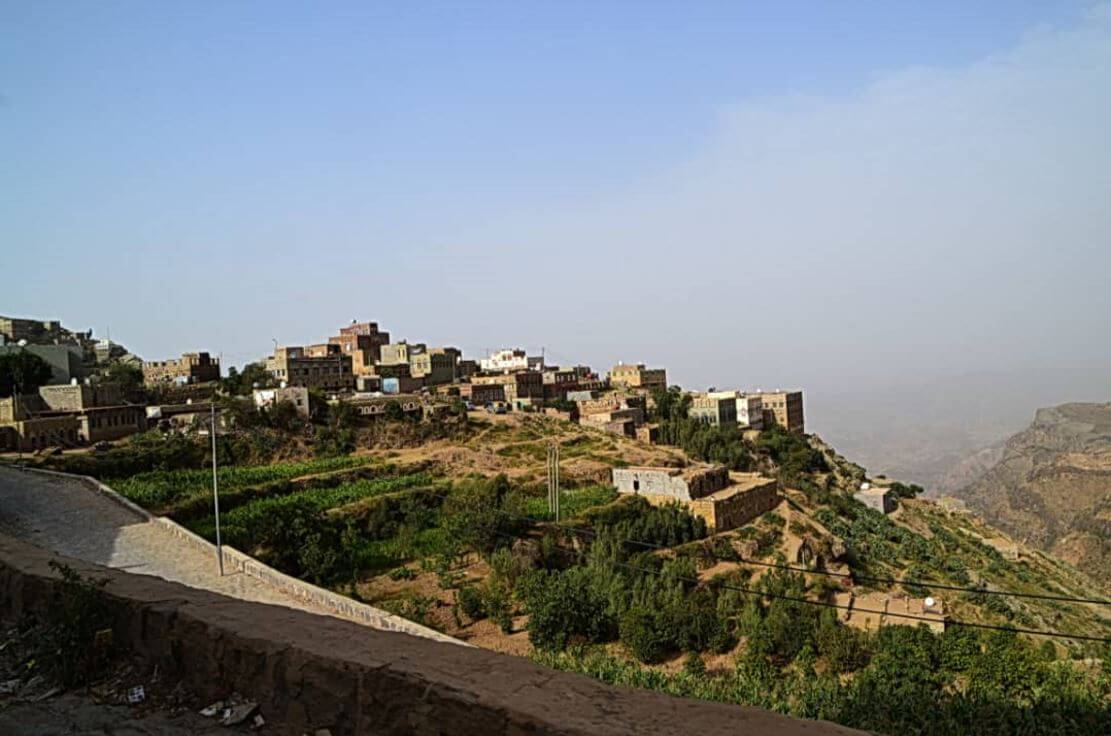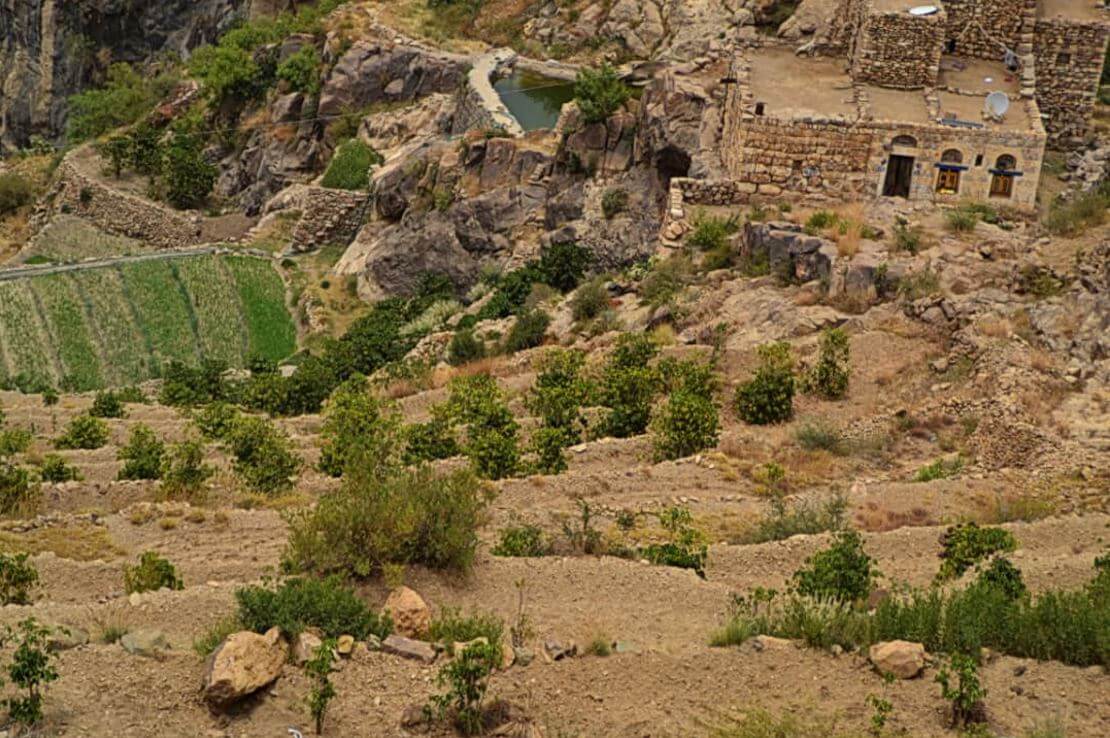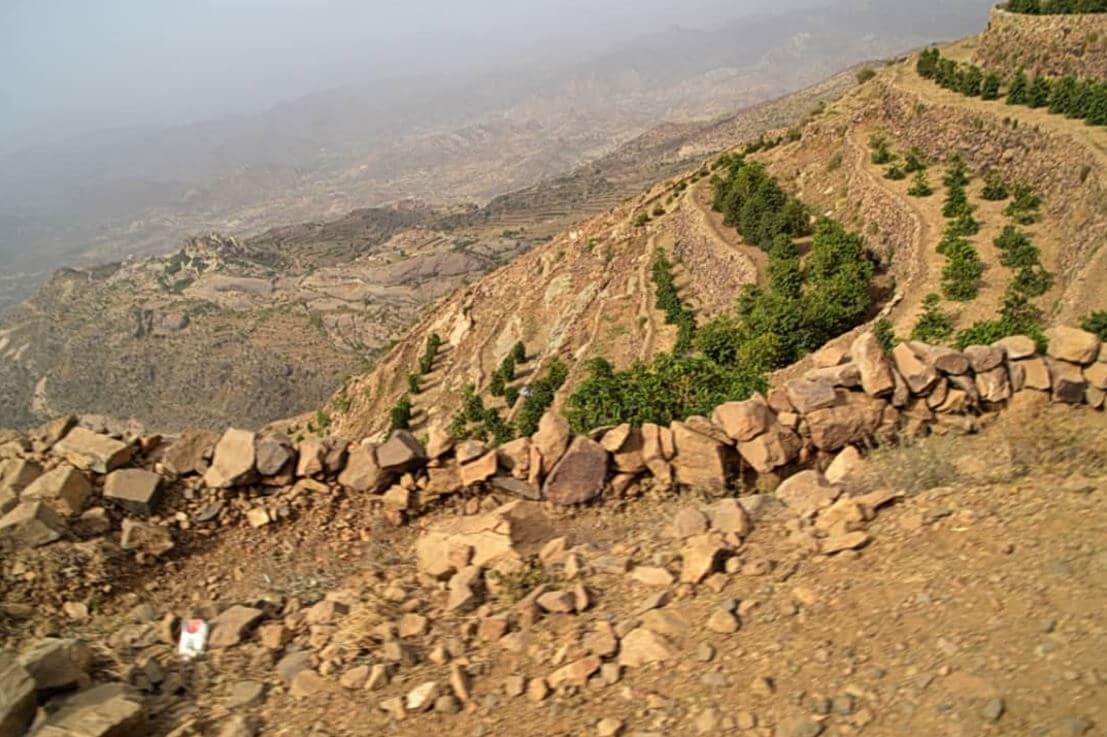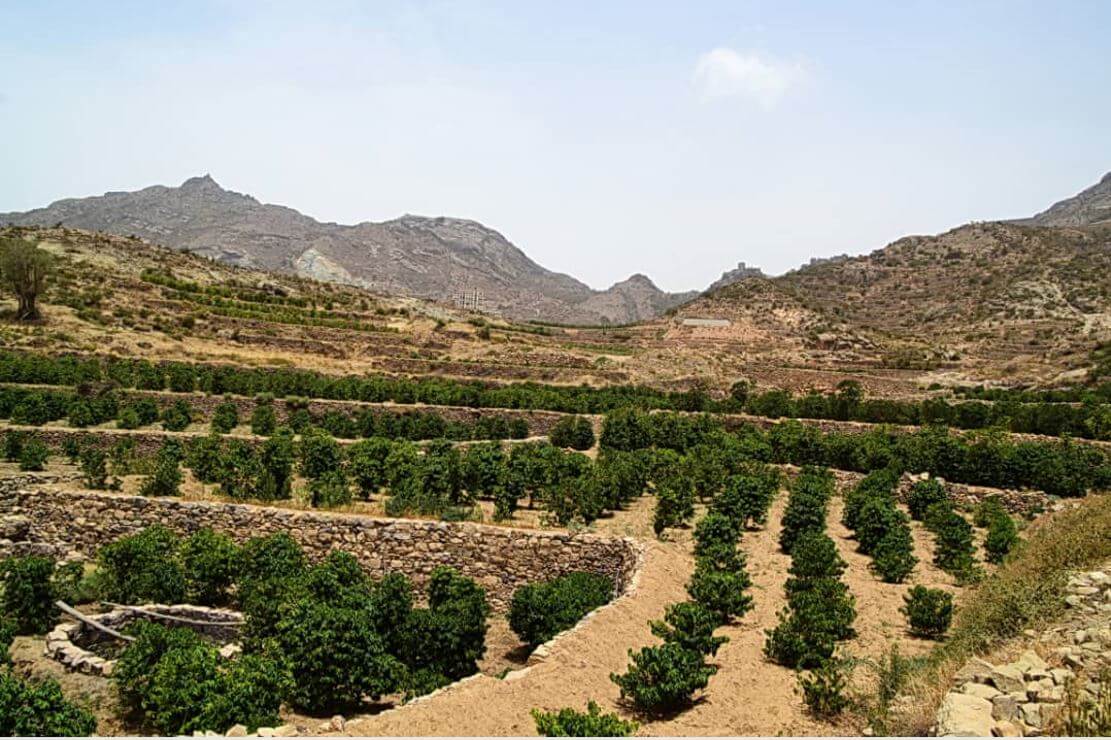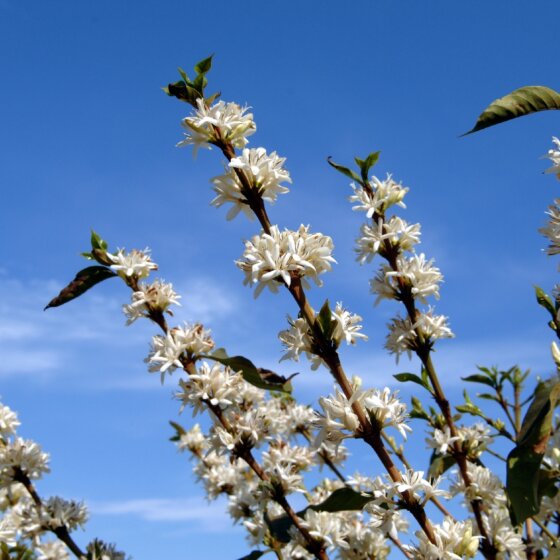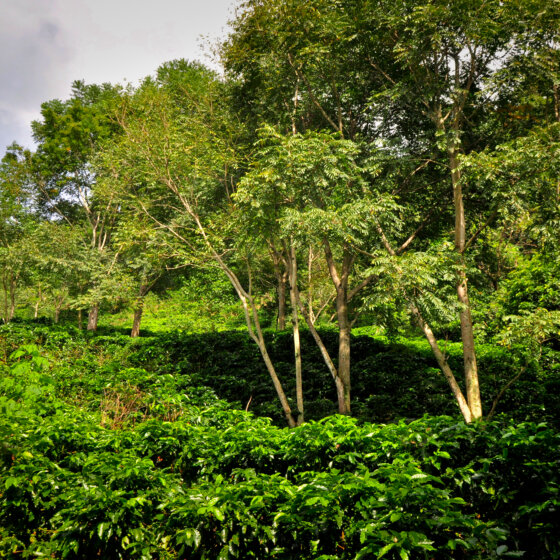SANANI Coffee comes from a slightly sloped deep intermountain valley in the traditional coffee growing areas of SANAA . The elevation of SANANI (the micro lot of coffee named after) valley is between 1000 -2000 m.a.s.l. Subtropical climate conditions prevail in the area with spring and summer rainfall average of 500 mm and dry fall and winter. This location coffee is of a favorable quality due to the availability of supplementary irrigation from a permanent upper valley spring. Thus, enabling farmers to control flowering time and avoiding water stress during bean development.Picking coffee crop in Yemen is not done at a time as it is done in other countries. It is done manually and on daily basis. When the crop is completely red and ripe, the
farmers pick them. Therefore, this process continues for two to three months. Rooftop and raised bed sun draying (natural) for the ripe crop. This way of drying gives the Yemeni nice flavor and special color better than coffee produced in other countries which use the artificial drying. Coffee loses its quality, smell and taste. They purify the good, and then they dry it for two weeks in the sun. Sometimes drying process is done using modern technology. The first two days are for sorting the ripe red crop. The less red is classified second grade. Daily checking up for the level of wetness is done until it reaches the required level of dryness. Coffee then stored at a certain temperature and a certain level of humidity if the marker price is not appropriate. If it is appropriate, then dry crops are sold or delivered to the merchants.
Coffee fact sheet

Yemen Mocca Sanani
This coffee has a decent acidity in good balance with sweetness, a smooth body and flavors of berries and oak.
| Variety: | Dawaery, Tuffahi |
| Processing: | Natural |
| Grade: | A+ |
| Body: | Rund, Sanft |
| Acidity: | Elegant, Gering |
